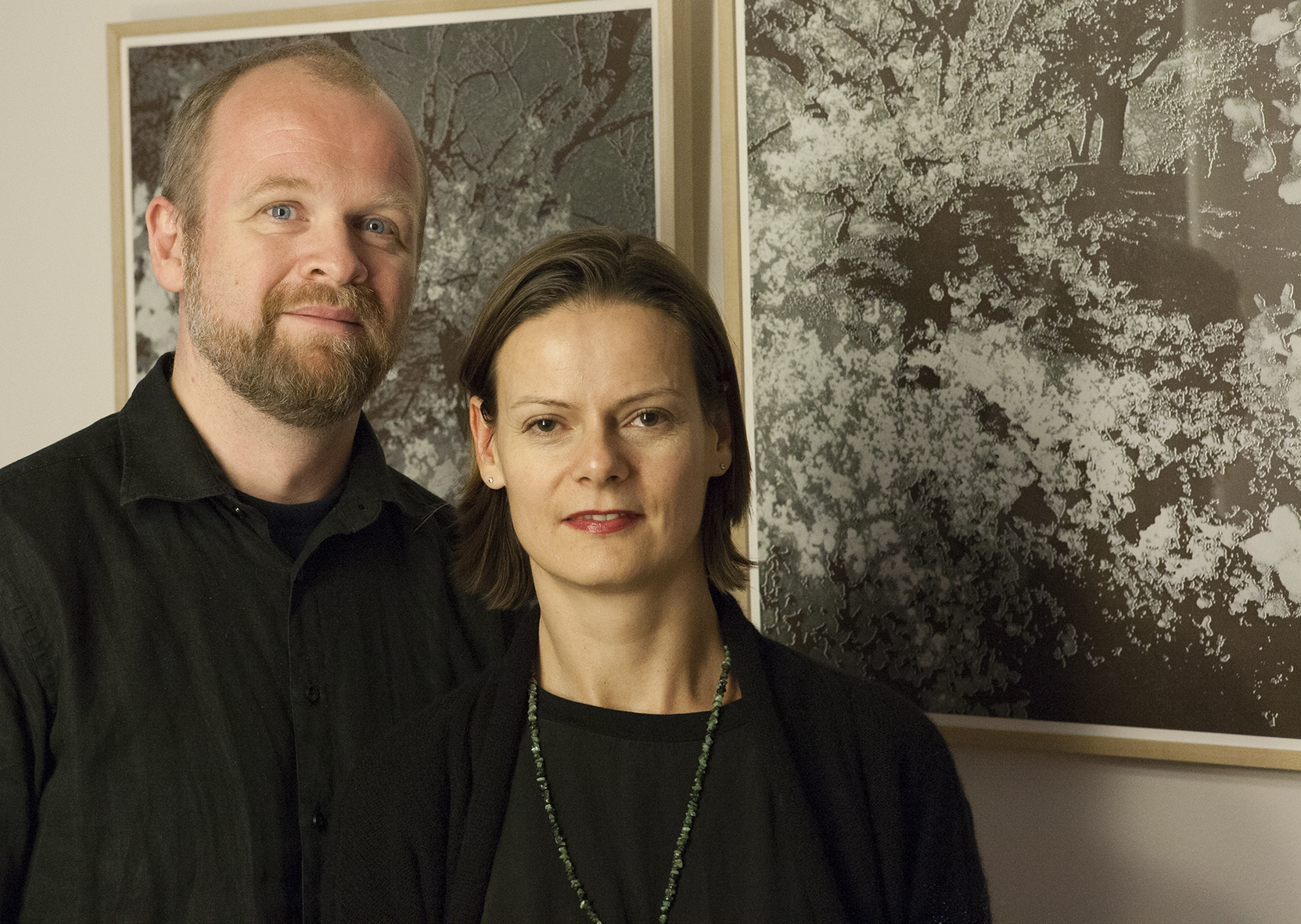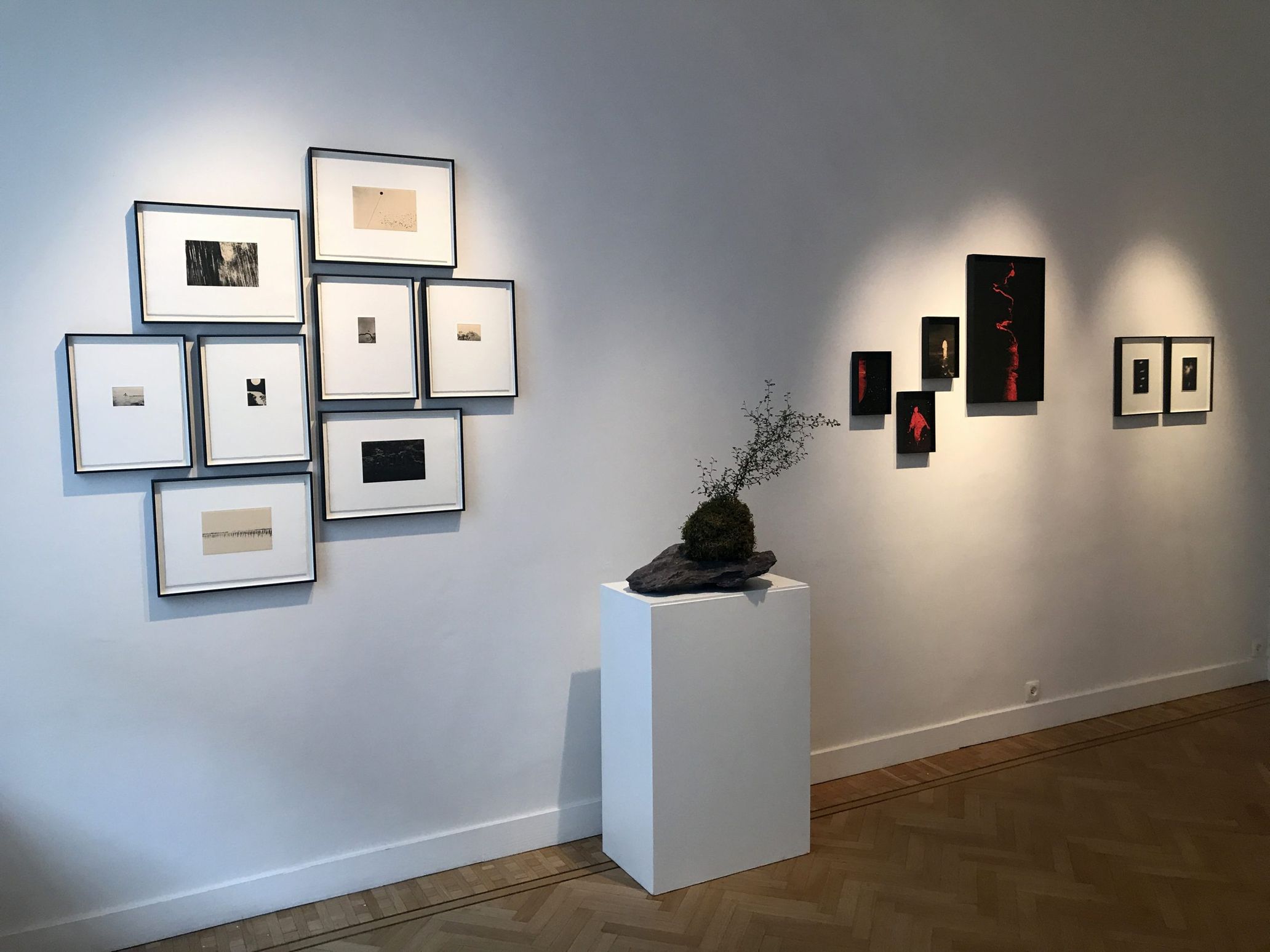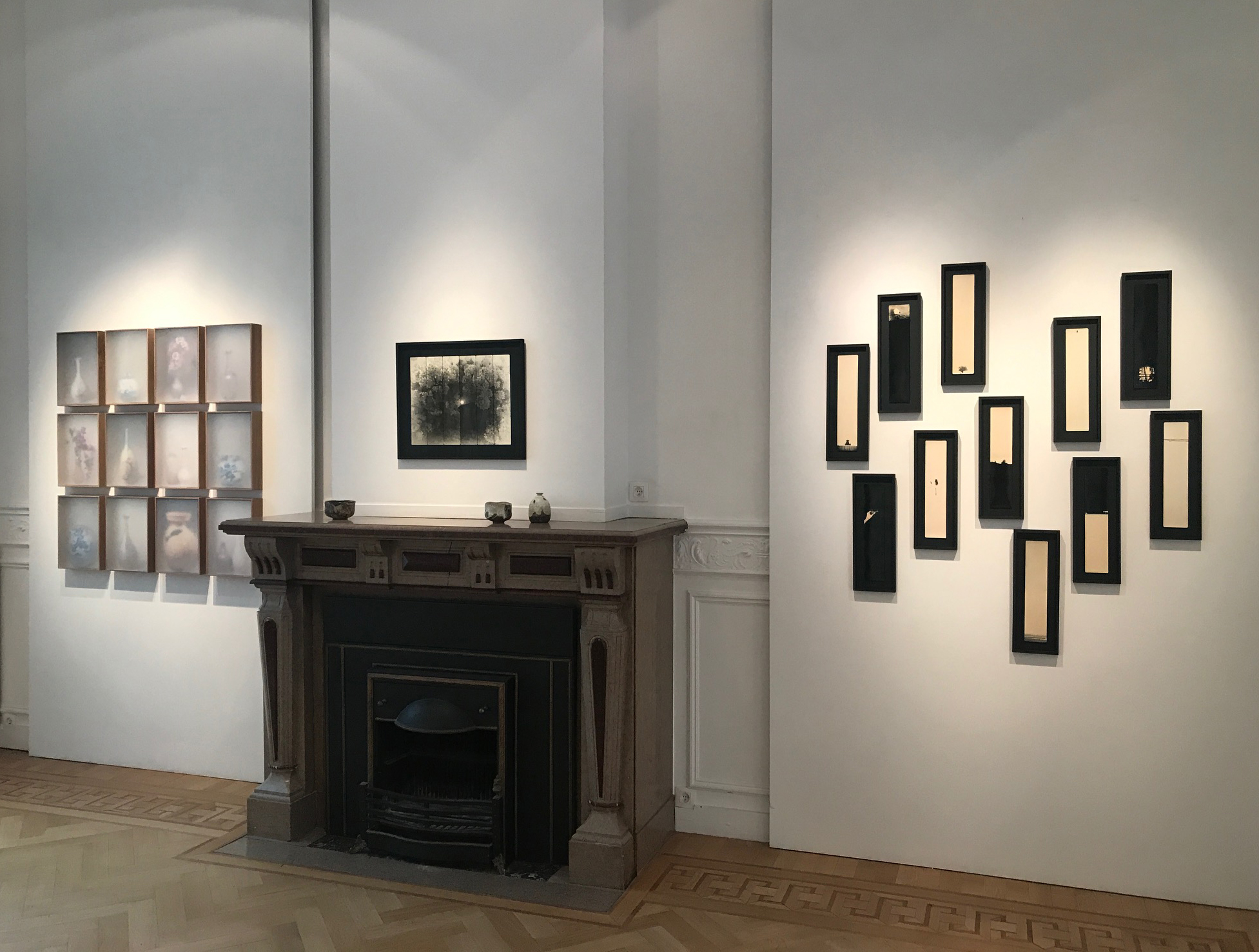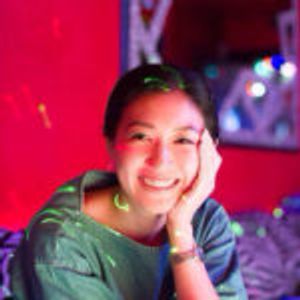IBASHO Gallery in Antwerp, Belgium was founded by a couple, Annemarie Zethof and Martijn Van Pieterson, in 2015 and specializes in Japanese photography. They started out as industry outsiders with passion for Japanese photography. Ibasho means “a place where you can be yourself” in Japanese. The gallery certainly lives up to its name, housing a solid and diverse collection of Japanese photography that were curated based on the founders’ taste and intuition. Having built strong ties with artists in Japan with their thoughtful and introspective approach, Van Pieterson said, “We have such a small niche in the world of photography, and we’d like to go very deep into that niche.” I asked Van Pieterson about their gallery and curatorial process.
The starting point of our curation is always our taste.
――Before the two of you opened the gallery in 2015. You have collected a range of artists, from well-known Japanese photographers, such as Eikoh Hosoe and Daido Moriyama, to upcoming artists. Can you tell us about the appeal and uniqueness of Japanese photography for you?
Martijn Van Pieterson: We collected ukiyo-e for a long time before we got into photography, which was our initial link to Japan. Then, we started to collect photography, but we had no knowledge of Japanese photography. Back in 2012, we went to see the William Klein + Daido Moriyama exhibition at Tate Modern and were blown away by Daido Moriyama’s work. It was so powerful. His photography has grittiness, contrasts, and layers. It spoke to us immediately. We were so inspired by his work and wanted to learn more about it. Our quest led to work by Eikoh Hosoe and other influential people in Moriyama’s life. Then, we started to expand our interest in Japanese photography in general. We started to look for other artists that we felt connected to. It’s hard to describe what we mean by “connection.” For example, we walk into a booth at an art fair or go to a museum. We encounter work that we like. It turns out that nine out of ten times, the work we liked were by Japanese artists. We strongly felt that we were inspired specifically by Japanese photography. That’s how things started.
――You curated Japanese and also Western photographers who were inspired by Japan. How would you define your curation process?
Van Pieterson: Our gallery promotes Japanese photography in a slightly broader sense than just photography made by Japanese nationals. It can also be photography made in Japan by non-Japanese nationals. The starting point of our curation is always our taste. That is the overall point. It’s important that we like the photographer’s work and feel a connection — a good feeling about the work. Then, it doesn’t matter if it’s a Japanese artist or a Western artist as long as there is a connection with Japan. It’s also important to have people that we can work with in a pleasant way. I hope artists appreciate what we do and understand the way we operate and have a good connection with us. We do not want to have a difficult relationship with an artist. That’s really important.
In terms of our curatorial process for our summer shows, we try to find a theme connected with Japan or art creation in Japan where we feel that there is something interesting. Last year we curated a group show, which was very well received around the theme of wabi-sabi. A lot of people were inspired by it here in Europe – the whole idea of beauty and imperfection. It was also connected, in a way, with the pandemic crisis. Many artists created very sensitive work with natural themes, using manual processes. There was a sense of uncertainty in their work. The prints they made were often handcrafted on special paper or handmade paper. We thought the theme was versatile where we could showcase work by many different artists. Every year, that is how we curate the summer shows, and when we have the time for it, we organize group shows in winter time.
We’ve become something like the go-to place for Japanese photography because we work with so many different artists compared to most galleries, which only represent one or two Japanese artists. We work with over 50 artists, and we have work by more than 100 artists in our collection. We are a good place to start if you want to do a deep dive into Japanese photography. We want people to know Japanese photography and the artists. We know many of them in person. I met Hosoe-san a few times. My wife met (Issei) Suda-san when he was still alive. We have built the connections, and that lends to the reputation of the gallery over time.
We’d like to go very deep into that niche.
――What are your future plans? Do you have any shows coming up?
Van Pieterson: We plan our shows on an annual basis. We have already started to think about 2022. We only have limited slots. We generally want to show solo projects or maybe dual projects throughout the year, except for summer and winter. In summer, we want to curate a group show. We also do a number of art fairs, specifically photography fairs. We have actually participated in photography fairs since we started our gallery. We have presented a curated booth for some of them. In 2019, we participated in Paris Photo, the largest photography fair in the world. The theme of our exhibition was hibi, which means daily life in Japanese. We felt that many photographers like to photograph what they see on a daily basis, and that is what we featured in our booth. The work was well received in Paris.
――In addition to your current gallery business, you have started publishing your own collection of photo books with Paris-based publisher the(M) éditions. Could you tell us about your venture into the publishing side of the business?
Van Pieterson: The book element of our business is important because we believe that photo books are an extremely important part of creation for the Japanese artists. Traditionally, I would say prints in Japan is not a huge business. Thus, the opportunity for artists to express themselves is limited. Most artists tailor their work to present them in books. Photography books in general and, particularly, Japanese photo books have become very popular over the years in Europe. We have a bookshop in our gallery and we often curate a small exhibition related to a book that we publish or we want to promote. While we think about curation, we also think about our book projects as well.
――How do you build relationships with artists?
Van Pieterson: We came to work with different artists in different ways. Sometimes, we look for them actively and try to meet them in person. Sometimes, artists approach us. My wife has done a number of portfolio reviews at Kyotographie International Photo Festival in Kyoto. When we are in Japan, we try to meet as many artists as possible. We start with the ones we know and then we try to meet the ones that we are interested in. Not all of them are for our gallery, but it is interesting to see their progression. We have such a small niche in the world of photography, and we’d like to go very deep into that niche.
We do not necessarily represent artists like a normal gallery. A normal gallery may represent a limited number of artists and work with them exclusively. We prefer to work on a project basis so that we can work with a diverse range of artists, and select artists that are suitable for the project. The artists understand that we are different in that way. We also want to be fair and try to find good opportunities for the artists that we like and work with. For instance, we can now offer book projects to our artists. We might not be able to include all the artists we want in our exhibitions, but there is a chance to include their work in a publication. We always try to engage with the artists and find interesting projects to work together. With some of the artists, we end up building a close personal relationship as we work with them on a daily basis. For us, it’s always important that we build a relationship based on mutual respect. We very much appreciate the work that our artists make and we’ll always try to see how we can incorporate it into our activities.
We produced the videos to create connections with people.
――How do you feel about the audience’s reaction to your gallery since you first opened until today?
Van Pieterson: It’s very interesting. When we opened the gallery, everything went well as we were new and had an exciting theme. At that time, Japanese photography was up and coming. We were on that wave and had a very good start. After the initial phase, we were still growing, but it was harder. Now, we have been in existence for six years, and we have established ourselves very well. We are now the go-to place for Japanese photography, not only in prints, but also in books. That is very important. At this moment, obviously with the pandemic, we don’t know how things will progress. And, it’s a tough business. However, we definitely have a good thing going. I feel we are respected for what we do. Of course, it’s not for everybody’s taste, but people are enthusiastic about our books and prints.
――You see a lot of exhibitions and fairs throughout each year. What was the best exhibition that you saw in your career?
Van Pieterson: I already mentioned the one with Moriyama’s work at Tate Modern, which was amazing. It was an eye opener for me. I thought the exhibition of Masahisa Fukase at Les Rencontres de la Photographie in Arles, back in 2017, was extremely well curated. I saw a very nice and beautiful exhibition of Nobuyoshi Araki’s work at the Foam Photography Museum in Amsterdam. His work is stigmatized because of its graphic and sexual nature. It’s an important part of his work and that is undeniable. At the same time, I feel that he’s done so much more. The portraits of his late wife and cat in their last years were really powerful. I was also impressed with Masao Yamamoto’s work, which was presented at Paris Photo, was at Terry Etherton Gallery a few years ago. It was wonderful. It was presented beautifully, and was a truly immersive experience. I was amazed by it. I believe it was the previous year, Galerie Kicken at Paris Photo had a beautiful presentation, combining Japanese and Western photography in panels in their booth. It was visually very attractive and well done. Taka Ishii Gallery had presented amazing booths in Paris Photo as well. The one I remember had a hole in the wall as if someone or something had jumped through the hole. It was spectacular. It shows that there is strong curation both in museums and art fairs.
――What do you see as the challenges for 21st-century curators especially in the post-pandemic era?
Van Pieterson; I think we are seeing a need for more online curation. We have already seen that in platforms like Artsy and with other galleries. We have to learn to present our work online in a better and immersive way. With the pandemic going on, we have started to create videos in collaboration with the artists. Instead of just showing their work, we get video material from the artists. We have fragments of video or audio from the artists or texts that they’ve written. It’s something that the artists find inspirational. We produced the videos to create connection with people. Even before the pandemic, it’s not that everyone could come by to our gallery as we are in Belgium, and our clients are scattered all over the world. Now, even people in Belgium could no longer visit our gallery. The videos are well received, and I realized that there was a strong need for that. People have been sitting inside their homes for over a year. People have gotten used to receiving content through internet. Many people are dying to get out to visit museums, art fairs, and galleries. But I think people will continue to appreciate online offerings. We will definitely continue to develop online content. The tools and ideas that we have for online content are still quite limited. This is something that we need to think about.
The challenge before and after the pandemic is still the same. How do we deliver interesting content? There is more content out there in terms of the number of exhibitions and online activities. We are always competing for people’s attention. We have to step up our curation. You cannot just put some work on the wall and expect people to come and see it. You have to really think about the narrative, and the connections that you make through the work. Back in the 80s, there were times that people would talk about the hottest exhibition. Nowadays, there is no such thing as the next hottest exhibition.
IBASHO Gallery
IBASHO means “a place where you can be yourself” in Japanese. IBASHO is a gallery in Antwerp that opened its doors in March 2015, showing fine art Japanese photography ranging from works by well-known Japanese photographers to younger contemporary Japanese artists as well as works from Western photographers who were inspired by Japan. IBASHO hopes to show the versatility and beauty of Japanese photography in its many guises, from the raw and unpolished to the minimalist and still. As photo books are an important medium for presenting photography in Japan, IBASHO also deals in new and antiquarian Japanese photo books. Recently IBASHO has started publishing its own photo books together with Paris-based publisher the(M) éditions.
https://ibashogallery.com/
Photography IBASHO Gallery
Translation Fumiko M





